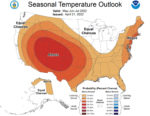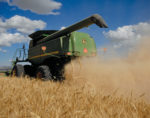Advertise Follow Us
Items Tagged with 'Climate'
ARTICLES
Ryegrass Seeded Early Into Corn May Be A Cool Climate Tool
Farmers in the province of Quebec seeding annual ryegrass into standing corn at the four- to nine-leaf stage find no yield drag with corn and a yield bump for soybeans.
Read More
No One Answer For Handling No-Till Residue
You’ll find significant differences in the way no-tillers handle crop residue depending what part of the country they live and farm.
Read More








